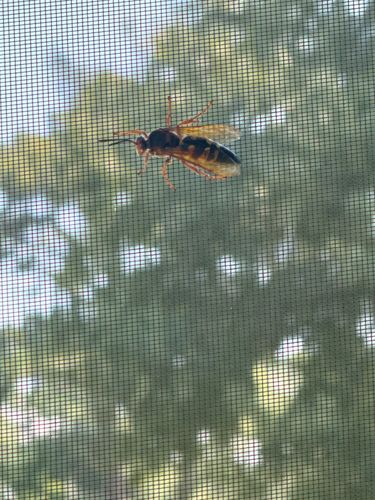Eastern Cicada Killer Wasp
Scientific Name: Sphecius speciosus
Order & Family: Order: Hymenoptera, Family: Crabronidae (specifically, Sphecius speciosus within this family)
Size: Large wasps, typically ranging from 1 to 2 inches (2.5 to 5 cm) in length. Females are generally larger than males.

Natural Habitat
Cicada killers prefer areas with sandy, light, or loose soil for their burrows, often found in lawns, gardens, golf courses, and along sidewalks. They are also found in areas where their primary prey, cicadas, are abundant, which includes woodlands and open, sunny areas.
Diet & Feeding
Adult cicada killers primarily feed on nectar from flowers and tree sap. The larvae, however, are provisioned with paralyzed cicadas by the female adult wasp.
Behavior Patterns
Cicada killers are solitary wasps, meaning they do not live in colonies like social wasps (e.g., yellowjackets, hornets). Females dig burrows in the ground, often in sandy or loose soil, where they provision cells with paralyzed cicadas for their offspring. The female lays an egg on a cicada, and the larva feeds on the cicada after hatching. Males are territorial and defend mating territories, often buzzing at anything that approaches. They are generally not aggressive towards humans unless provoked, as only females can sting.
Risks & Benefits
Risks: While impressive in size, female cicada killers are not aggressive and rarely sting unless directly handled or stepped on. Their sting is usually not very painful to humans, comparable to a honeybee sting. Males do not possess a stinger. Benefits: Cicada killers help control cicada populations, which can sometimes be a pest to trees and shrubs. They are also pollinators when feeding on nectar.
Identified on: 8/24/2025